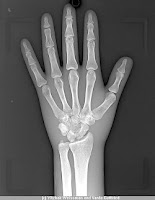There are a number of time management websites that exist, all offering thousands of tips.
To read them all, however, is to do oneself a disservice and create a distraction, if that is where one starts in an attempt to improve productivity. The effect is the same as trying to build a skyscraper using construction tips, while being ignorant of the fundamentals. In general, people don’t like the idea of being THAT ignorant, so they focus on the trivial, easy things they can do (like buy a new PDA).
They also blame their own lack of productivity on some gift that they don’t have, claiming that other more productive people are either blessed or naturally effective, or just anal retentive.
Meanwhile, they have less and less of what they want in their lives, and are increasingly less fulfilled and more overwhelmed.
In a recent issue of the Harvard Business Review (July-August 2007), in the article “The Making of an Expert“, Anders Ericsson makes the point that
“New research shows that outstanding performance is the product of years of deliberate practice and coaching, not of any innate talent or skill.” Continue reading “Death of a Thousand Tips”



